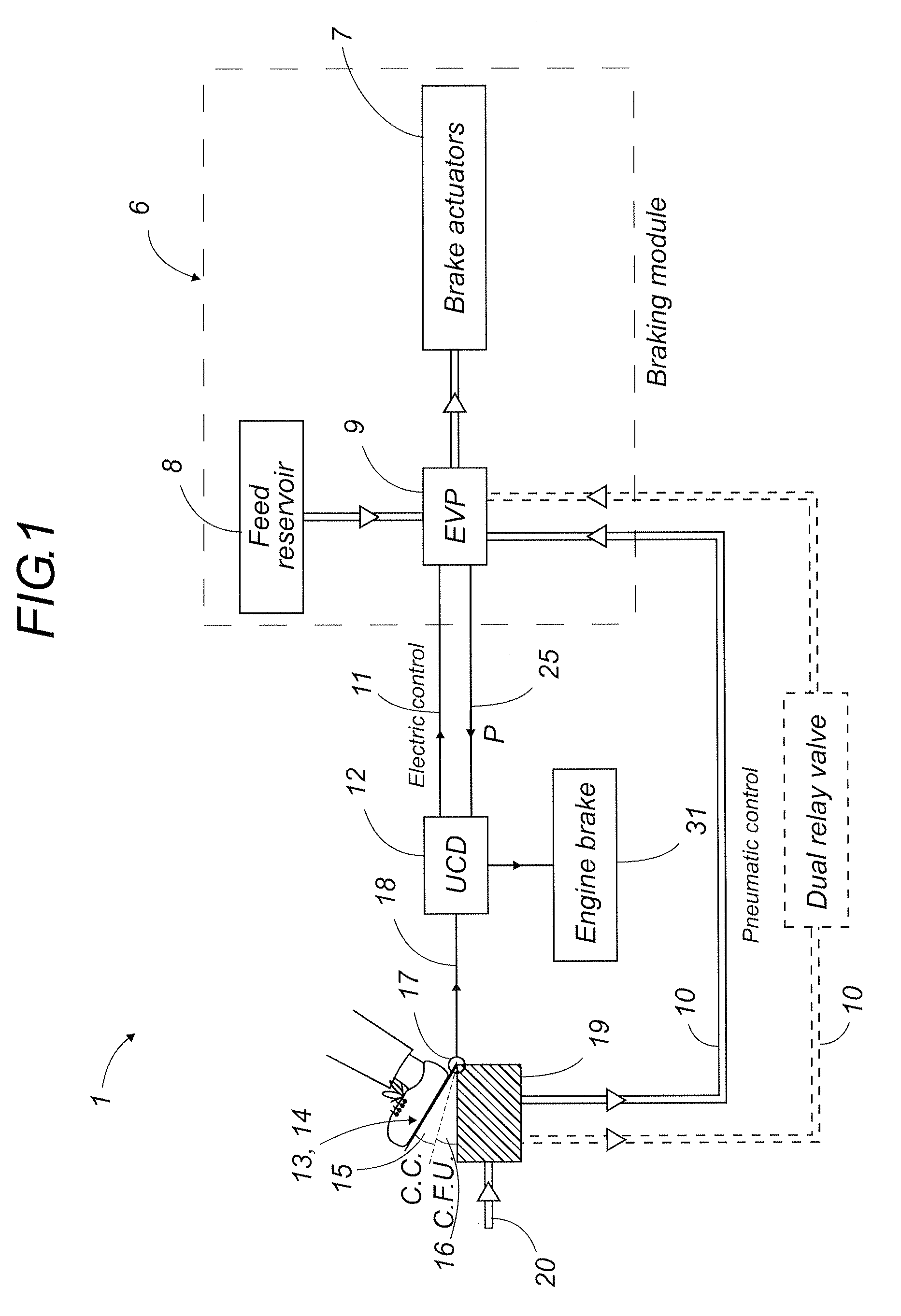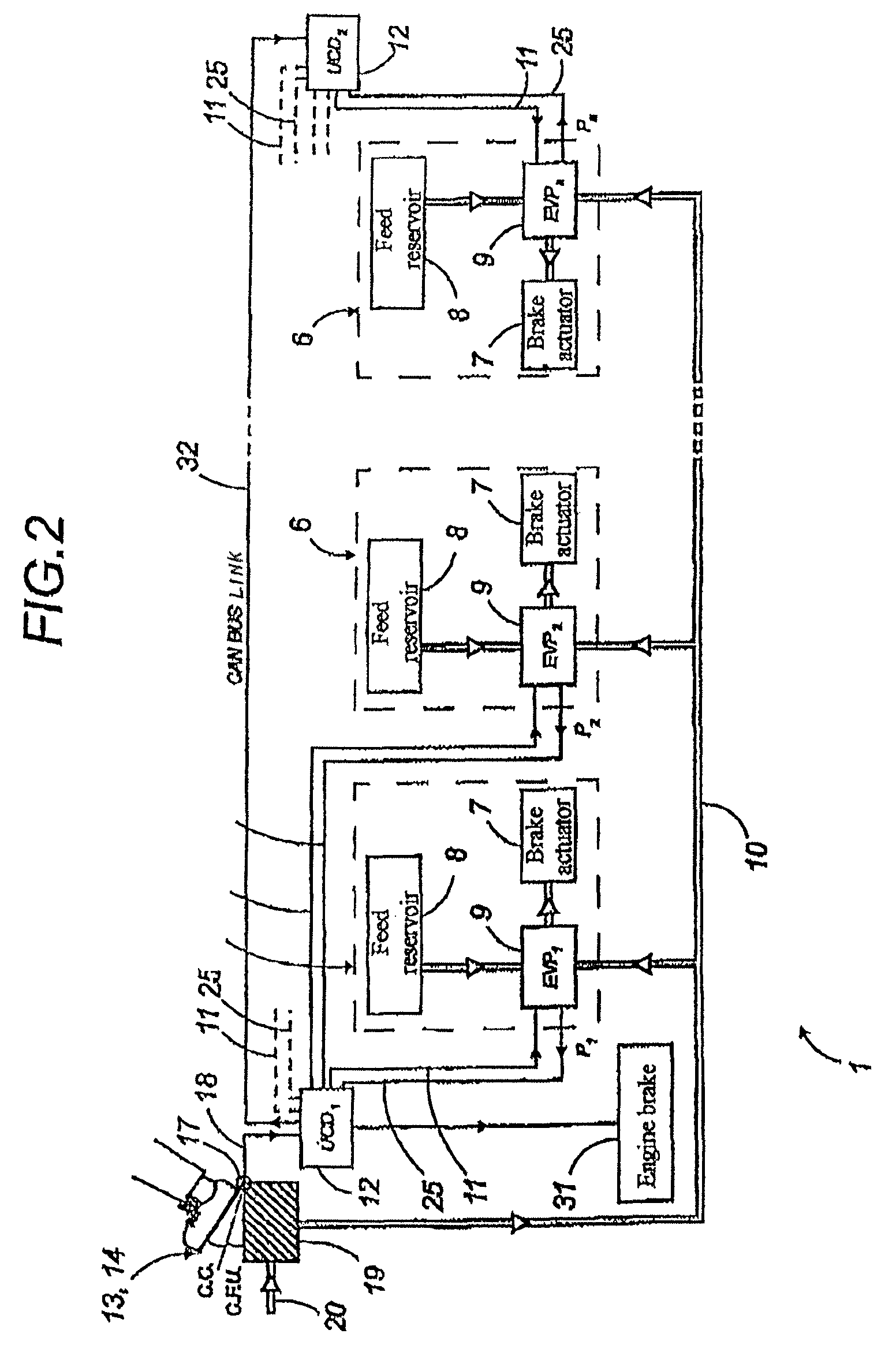Two-stage electromechanically controlled braking system for a multiaxle road vehicles
a multi-axle road vehicle, electromechanical control technology, applied in brake action initiation, brake system, railway braking system, etc., can solve the problems of slow response time of pneumatic control braking system, and inability to fully control the braking system. to achieve the effect of guarantying the comfort and safety of passengers
- Summary
- Abstract
- Description
- Claims
- Application Information
AI Technical Summary
Benefits of technology
Problems solved by technology
Method used
Image
Examples
Embodiment Construction
[0033]The braking system according to the present invention will now be described in detail, with reference to FIGS. 1 to 8. Equivalent elements shown in the various figures are given the same index numbers.
[0034]The present invention relates to an electromechanically controlled braking system for a multi-axle articulated road vehicle, in particular for carrying passengers. Clearly, that application is only an example and many other applications in multi-axle ground vehicles are possible.
[0035]Referring to FIGS. 3 and 4, the braking system 1 according to the invention is designed more particularly for installation on a preferably multi-axial road train 2 for public transport. This train 2 consists of a plurality of road modules articulated to one another, with at least one head module 3, and one or more carriages 4 intended for passenger transport and carried by intermediate modules such as 5, each having an axle.
[0036]Classically, the train 2 preferably has a head module 3 at each ...
PUM
 Login to View More
Login to View More Abstract
Description
Claims
Application Information
 Login to View More
Login to View More - R&D
- Intellectual Property
- Life Sciences
- Materials
- Tech Scout
- Unparalleled Data Quality
- Higher Quality Content
- 60% Fewer Hallucinations
Browse by: Latest US Patents, China's latest patents, Technical Efficacy Thesaurus, Application Domain, Technology Topic, Popular Technical Reports.
© 2025 PatSnap. All rights reserved.Legal|Privacy policy|Modern Slavery Act Transparency Statement|Sitemap|About US| Contact US: help@patsnap.com



